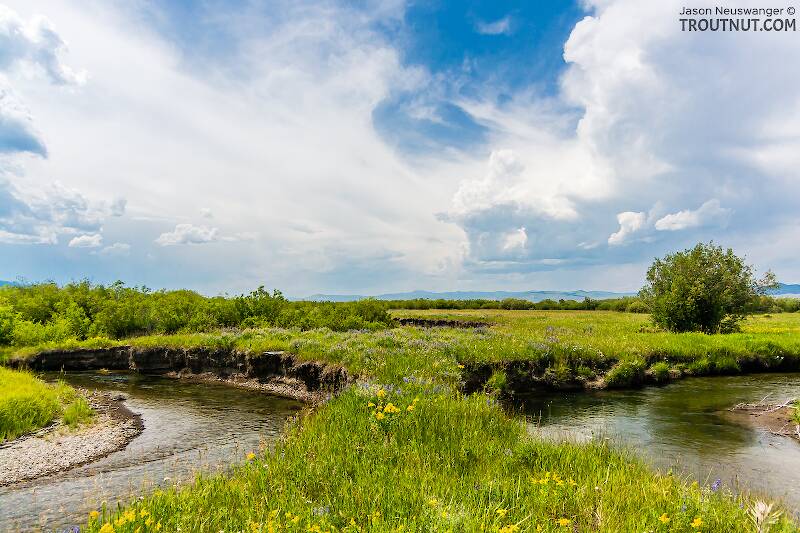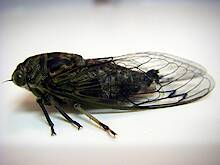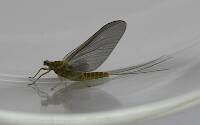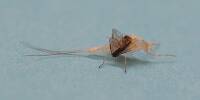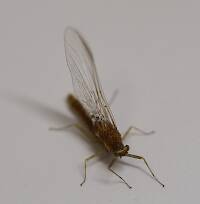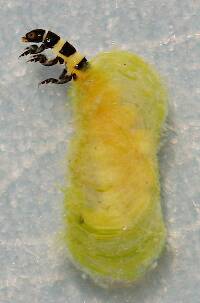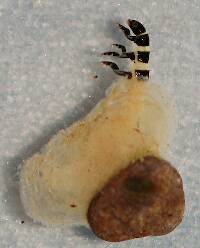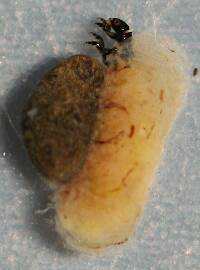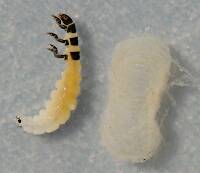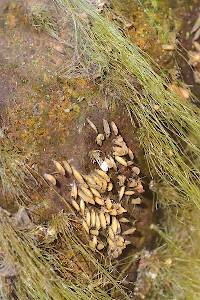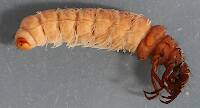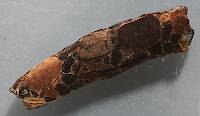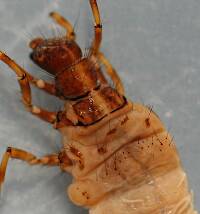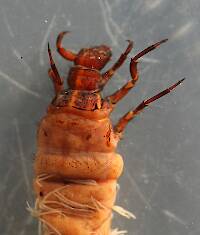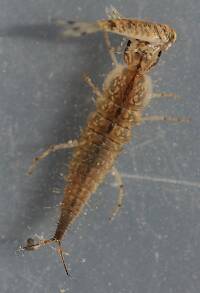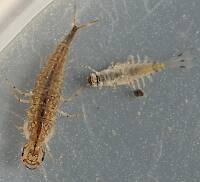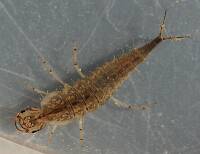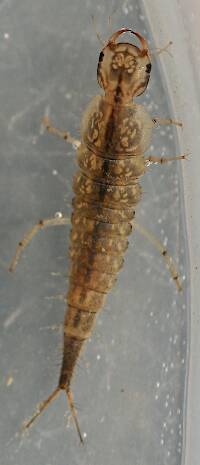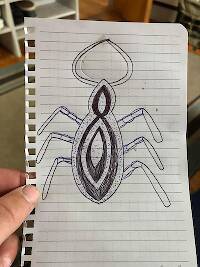
Hex Mayflies
Hexagenia limbata
The famous nocturnal Hex hatch of the Midwest (and a few other lucky locations) stirs to the surface mythically large brown trout that only touch streamers for the rest of the year.
Featured on the forum

This specimen resembled several others of around the same size and perhaps the same species, which were pretty common in my February sample from the upper Yakima. Unfortunately, I misplaced the specimen before I could get it under a microscope for a definitive ID.

Troutnut is a project started in 2003 by salmonid ecologist Jason "Troutnut" Neuswanger to help anglers and
fly tyers unabashedly embrace the entomological side of the sport. Learn more about Troutnut or
support the project for an enhanced experience here.
DayTripper on May 12, 2008May 12th, 2008, 8:26 am EDT
Here are some bugs I found waiting for the Hendricksons to pop this weekend on the Battenkill. I believe this first one to be Maccaffertium vicarium

Here's some others I haven't identified yet





I've got different angles on the Hendrickson Spinner, and the Brown Stone, as well as the Beetle- if they're needed. Also some more pics of different vicarium nymphs, some have a slightly different coloration.

Here's some others I haven't identified yet





I've got different angles on the Hendrickson Spinner, and the Brown Stone, as well as the Beetle- if they're needed. Also some more pics of different vicarium nymphs, some have a slightly different coloration.
GONZO on May 12, 2008May 12th, 2008, 9:23 am EDT
Just on a quick glance:
The vicarium ID on the heptageniid nymph seems reasonable; the stonefly nymph looks like a perlodid; the (male) Hendrickson spinner ID seems right (though missing a tail); the big beetle looks like some sort of "borer," but I have no clue about the hitchhiker; the caddisfly larva is a hydropsychid; and I'd guess that the stonefly adult could be in Taeniopterygidae. (Dave could probably sort that out for you.)
The vicarium ID on the heptageniid nymph seems reasonable; the stonefly nymph looks like a perlodid; the (male) Hendrickson spinner ID seems right (though missing a tail); the big beetle looks like some sort of "borer," but I have no clue about the hitchhiker; the caddisfly larva is a hydropsychid; and I'd guess that the stonefly adult could be in Taeniopterygidae. (Dave could probably sort that out for you.)
DayTripper on May 12, 2008May 12th, 2008, 2:52 pm EDT
Here are some more pics of the adult stonefly
http://daytripperblog.com/2008/05/12/medium-brown-stonefly-taeniopterygidae/
http://daytripperblog.com/2008/05/12/medium-brown-stonefly-taeniopterygidae/
Raider83 on Jun 27, 2008June 27th, 2008, 6:24 am EDT
Daytripper, I think the mystery larva is a predaceous diving beetle larva
GONZO on Jun 27, 2008June 27th, 2008, 10:48 am EDT
Raider83,
Some Dytiscidae larvae have a superficial resemblance to some caddisfly larvae. If this larva had been photographed in the water (and from different angles), I think the differences would be easier to see.
Some Dytiscidae larvae have a superficial resemblance to some caddisfly larvae. If this larva had been photographed in the water (and from different angles), I think the differences would be easier to see.
Quick Reply
Related Discussions
Topic
Replies
Last Reply
Re: This is one of my favorite mayfly photo sets
In Male Ephemerella aurivillii Mayfly Spinner by Troutnut
In Male Ephemerella aurivillii Mayfly Spinner by Troutnut
10
Jul 17, 2011
by Oldredbarn
by Oldredbarn
4
Apr 12, 2014
by Brookyman
by Brookyman

